Masterpiece Story: L.O.V.E. by Maurizio Cattelan
In the heart of Milan, steps away from the iconic Duomo, Piazza Affari hosts a provocative sculpture by Maurizio Cattelan. Titled...
Lisa Scalone 8 July 2024
Nike of Samothrace is the masterpiece of an unknown Hellenistic artist. While the artist’s story may be unknown, the statue’s story is as complex as its carving.
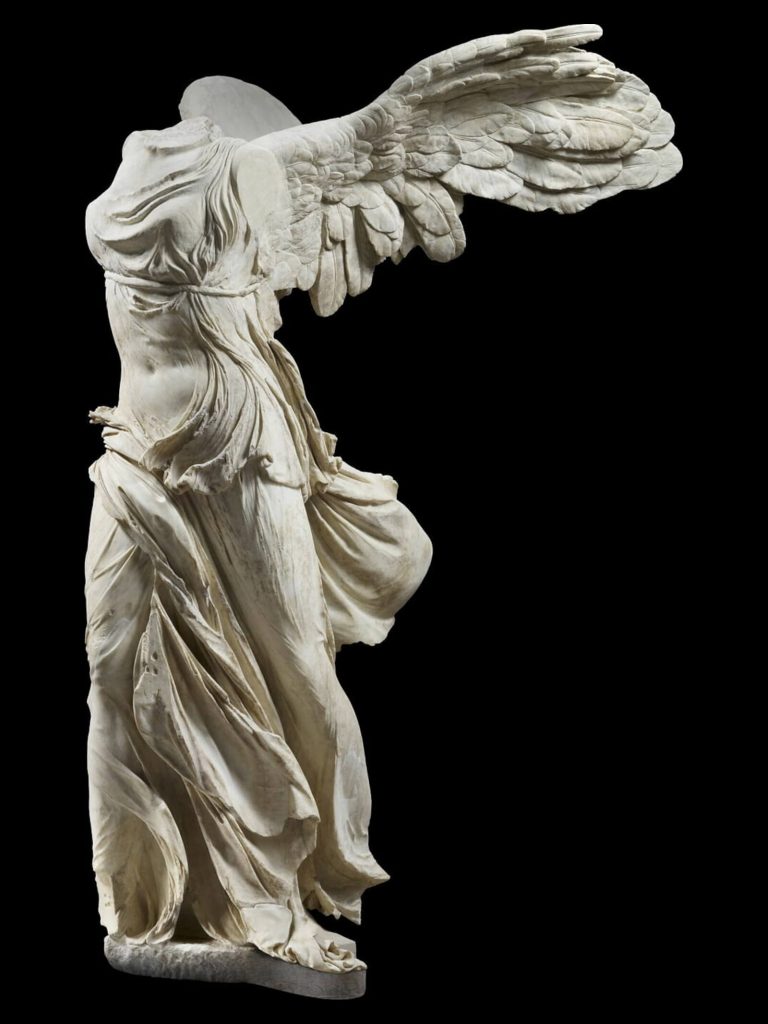
Nike of Samothrace, ca. 200-175 BCE, Parian and Lartian marble, Paleopoli, Samothrace, Greece, Louvre, Paris, France.
The Hellenistic Period was a vibrant antique era that lasted from the death of Alexander the Great in 323 BCE until the death of Cleopatra VII of Egypt in 30 BCE. It spawned a new international culture unified by the Greek language as well as a new artistic style unified by emotional theatricality. Hellenistic art is marked by dramatic movement and exaggerated presentation. It has been justifiably called the “Baroque of Antiquity” because it rejects the calm, quiet, and reserved attitude of earlier Classical art. The Nike of Samothrace is an absolute masterpiece of this “Baroque” Hellenistic period and is often considered a pinnacle of the Western sculpture tradition.
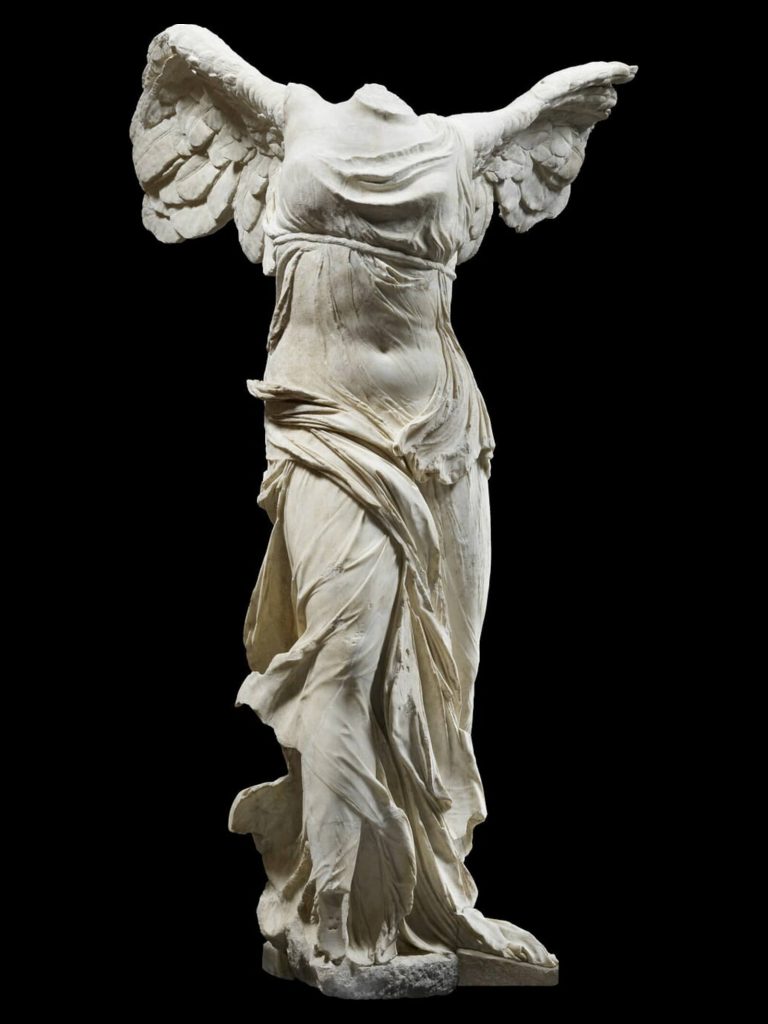
Nike of Samothrace, ca. 200-175 BCE, Parian and Lartian marble, Paleopoli, Samothrace, Greece, Louvre, Paris, France.
The Nike of Samothrace is a three-piece sculptural ensemble consisting of a figural statue atop a ship’s bow, sitting on a thick base. The entire ensemble measures 5.11 meters in height with Nike herself measuring 2.75 meters, the ship measuring 2 meters, and the base measuring 36 centimeters. It was originally dedicated as a victory monument at the Sanctuary of the Great Gods on the Greek island of Samothrace. Many art historians believe it was created and dedicated by the people of Rhodes for a specific, now unknown, naval victory. The overall sculptural ensemble is impressive, but the figure of Nike is the real showstopper. The boat and base simply provide a context for the beautifully winged woman.
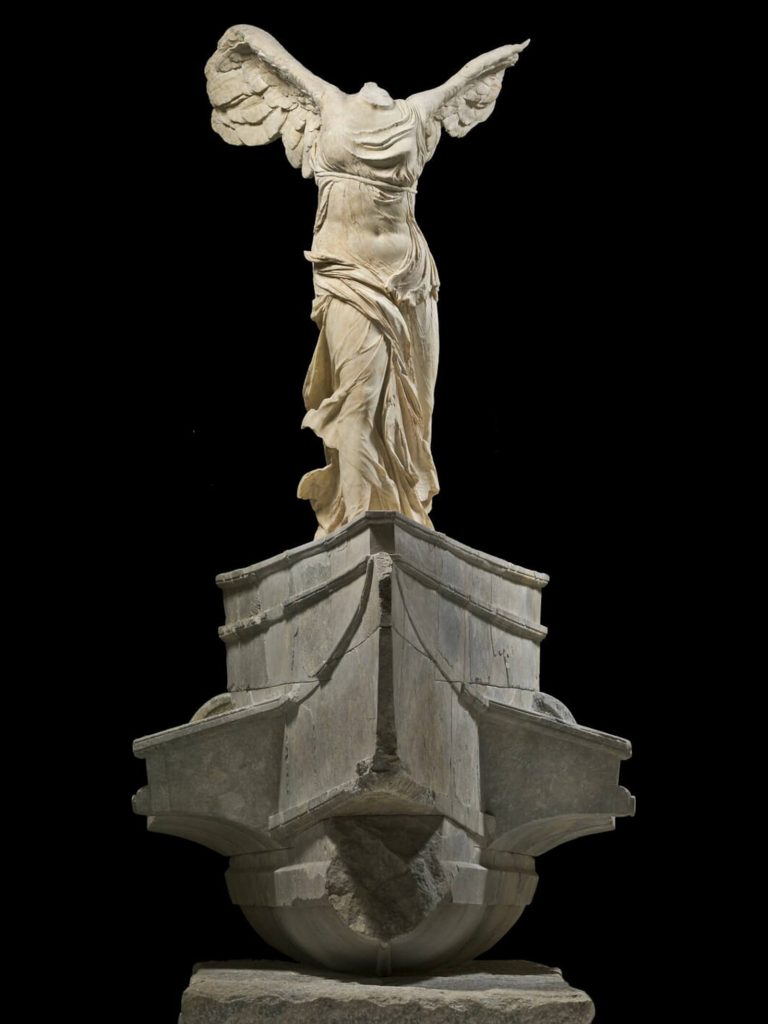
Nike of Samothrace, ca. 200-175 BCE, Parian and Lartian marble, Paleopoli, Samothrace, Greece, Louvre, Paris, France.
The sculpture depicts Nike, the goddess of victory. Her winged body has just landed atop the bow of a Greek warship with feathered wings outstretched and catching the last breaths of wind in the final moments of landing. Nike’s right arm, now lost, originally held a laurel wreath to crown the victor of the battle. Her head, also missing, would have gazed down at the spectator below, possibly with a radiantly victorious smile.
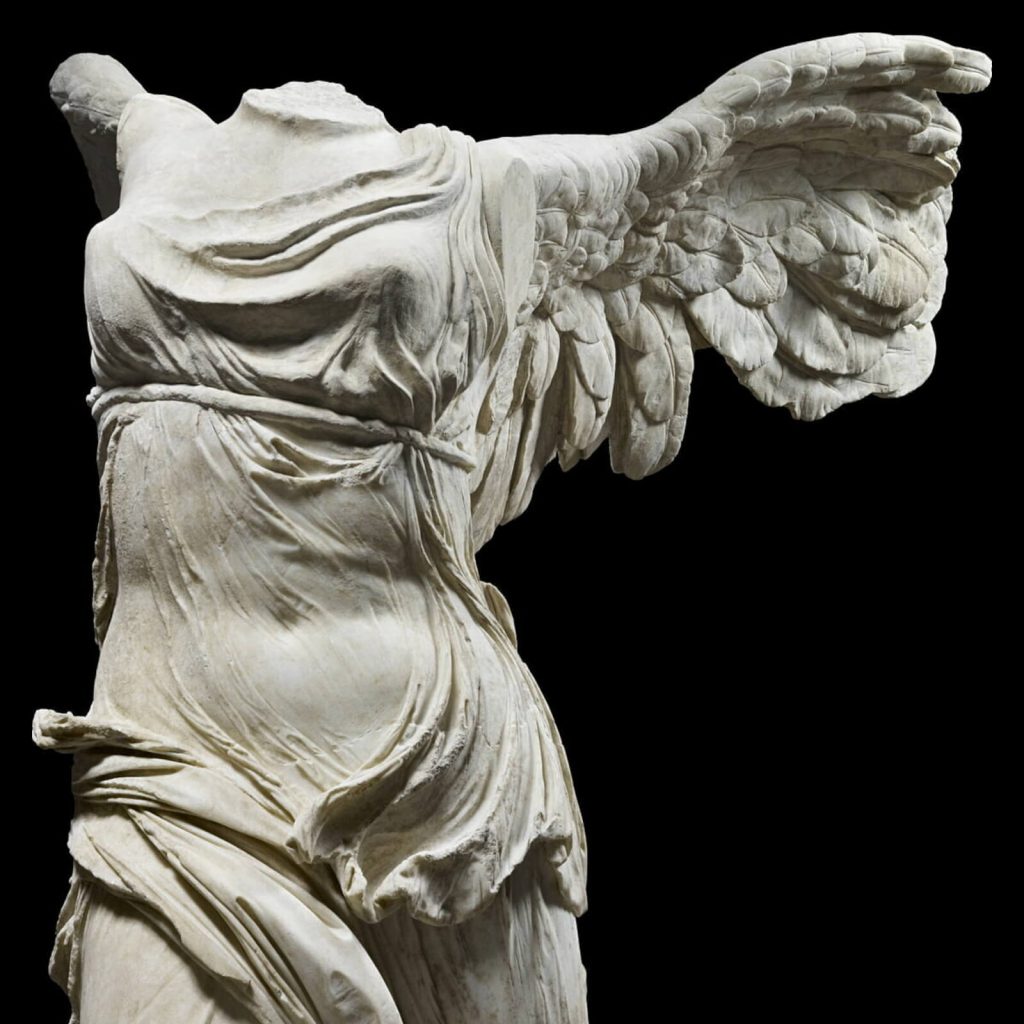
Nike of Samothrace, ca. 200-175 BCE, Parian and Lartian marble, Paleopoli, Samothrace, Greece, Louvre, Paris, France. Detail.
Her clothing violently whips around her voluptuous body as if possessed by a rushing wind. It clings to her breasts and stomach but also gathers and bunches in the crevices of her legs and hips. Nike’s chiton, or tunic, flattens into wrinkled transparency across her abdomen and left leg while her himation, or mantle-cloak, compresses into thick folds around her right leg. The swirling drapery both masks and reveals her body in a titillating play that transforms her into an erotic exploration of the female form. The transparency and clinginess of her clothing is a classical sculptural style known as the wet drapery style and it was widely used due to its explorative and erotic nature of human anatomy.
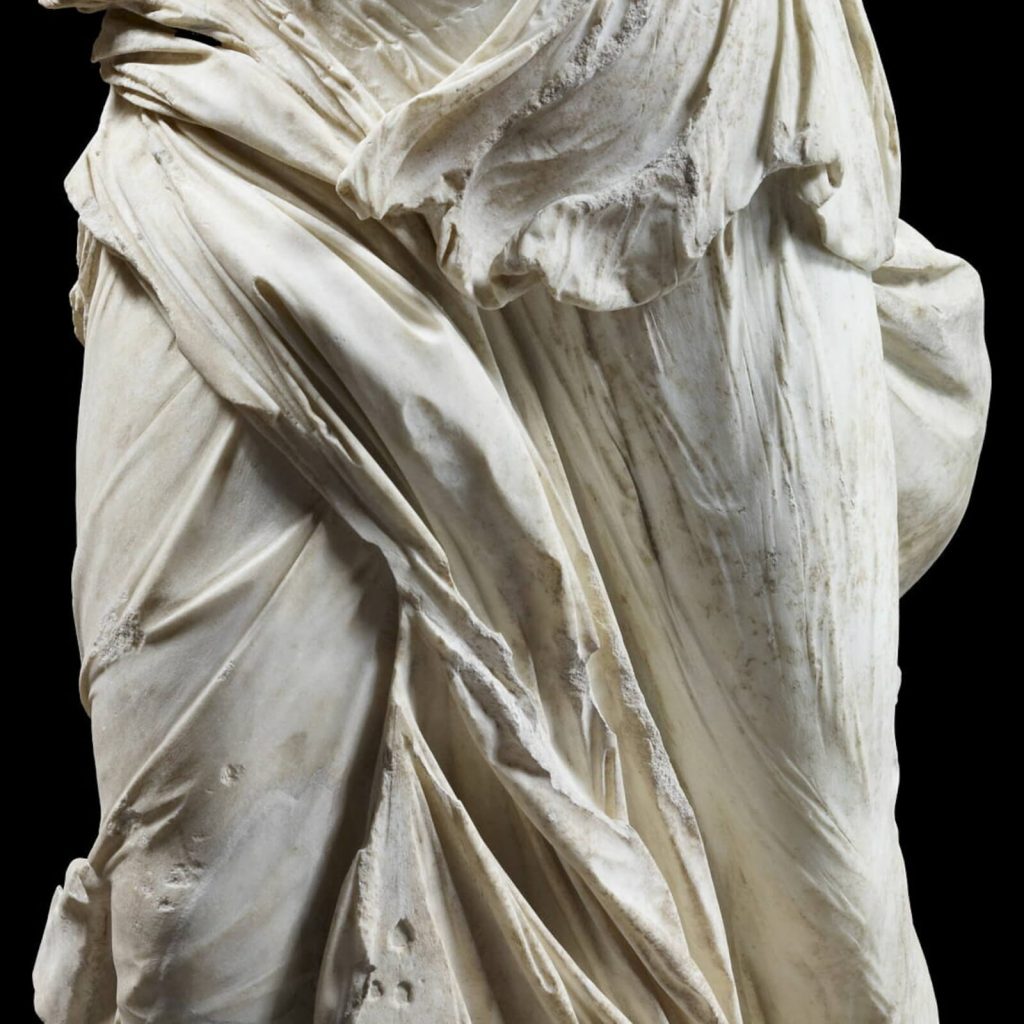
Nike of Samothrace, ca. 200-175 BCE, Parian and Lartian marble, Paleopoli, Samothrace, Greece, Louvre, Paris, France. Detail.
Below Nike is the victorious Greek warship. It is carved from Lartian (from Lartos, Rhodes) marble which is known for its gray-blue coloring. It provides a subtle but distinctive contrast to the Parian (from Paros) marble of Nike which is purely white. Unlike Nike, the warship has large, smooth panels of marble surface. It does not have Nike’s deep carvings and dark shadows and therefore lacks her dramatic rippling intensity. However, drama is always created out of contrast — lightness contrasts against darkness, and motion contrasts against stillness. Therefore, the warship magnifies Nike’s drama through its calm solidity. It anchors the goddess while also adding context to her appearance. It frames the narrative of a sea battle and a declares winning side. Hail victory!
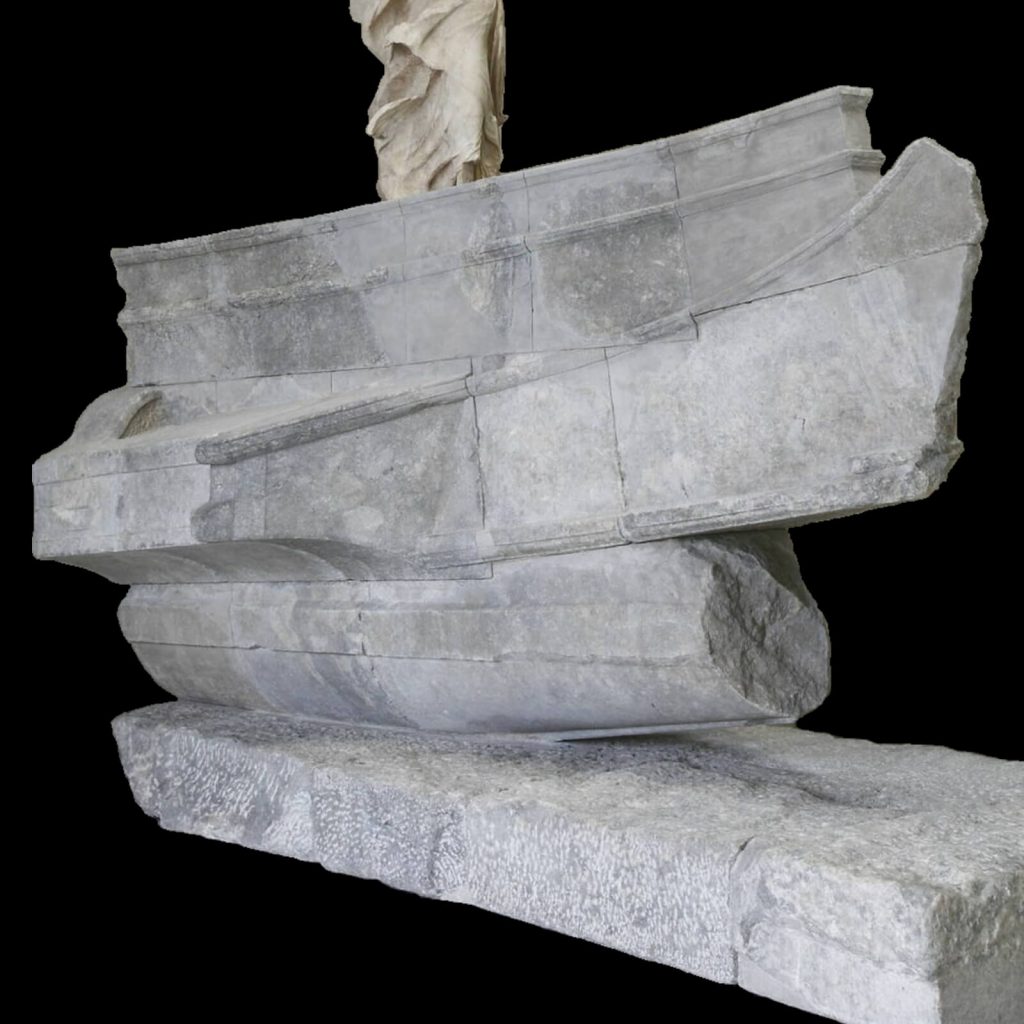
Nike of Samothrace, ca. 200-175 BCE, Parian and Lartian marble, Paleopoli, Samothrace, Greece, Louvre, Paris, France. Detail.
Below the warship is a base of 16 blocks laid over three courses. This base was originally part of the upper basin of a two-tier fountain. In the lower basin were large, rough boulders where flowing water crashed and splashed against the prow of the ship. It would have created the visual effect of a ship flowing forward against breaking waves and also would have added an auditory element to the visual drama. Furthermore, Nike’s reflection in the moving water would have augmented feelings of lightness and movement. The original overall effect would have been spectacularly opulent and boldly animated. Art and nature would have combined into a declaration of victory.
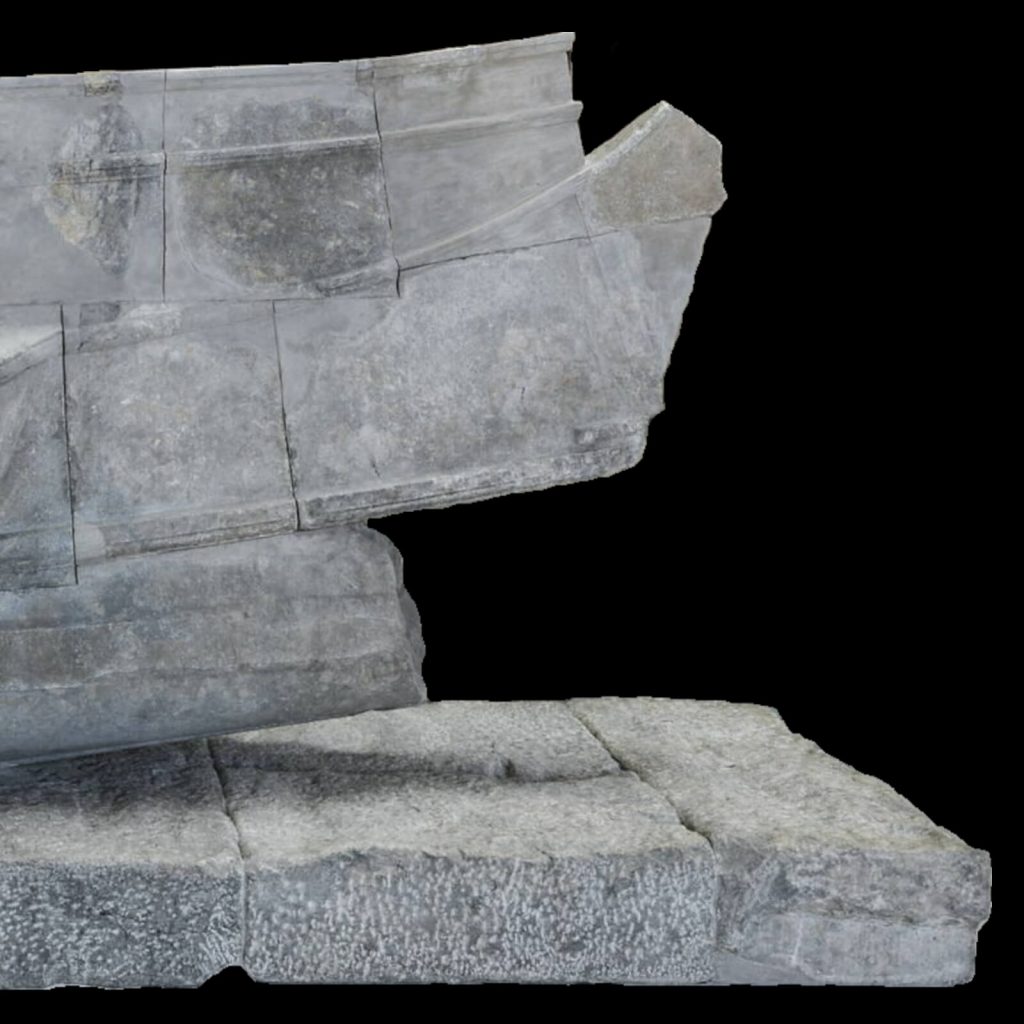
Nike of Samothrace, ca. 200-175 BCE, Parian and Lartian marble, Paleopoli, Samothrace, Greece, Louvre, Paris, France. Detail.
Nike of Samothrace was first discovered in 1863 by Charles François Champoiseau, a French excavator and archaeologist. He led two subsequent excavations and delivered pieces of the sculpture to the Musée du Louvre in 1864, 1879, and 1891. Therefore, the Nike of Samothrace that visitors see today was not fully assembled until 1891, almost 28 years after its first pieces were unearthed in 1863. That is a long time for such an artwork to be assembled and displayed. However, the wait was justified as Champoiseau found the majority of the sculpture’s pieces and reassembled them to evoke its original context for modern viewers. Champoiseau’s discovery helped revive interest in Hellenistic artworks during the late 19th and early 20th centuries. Their theatrical poses, vigorous movement, and voluminous dimensions were so different from the domineering Classicism and Academism of 19th-century Europe! They offered a new interpretation of Antiquity which captivated 19th-century Europeans who desired new inspiration from the distant past.
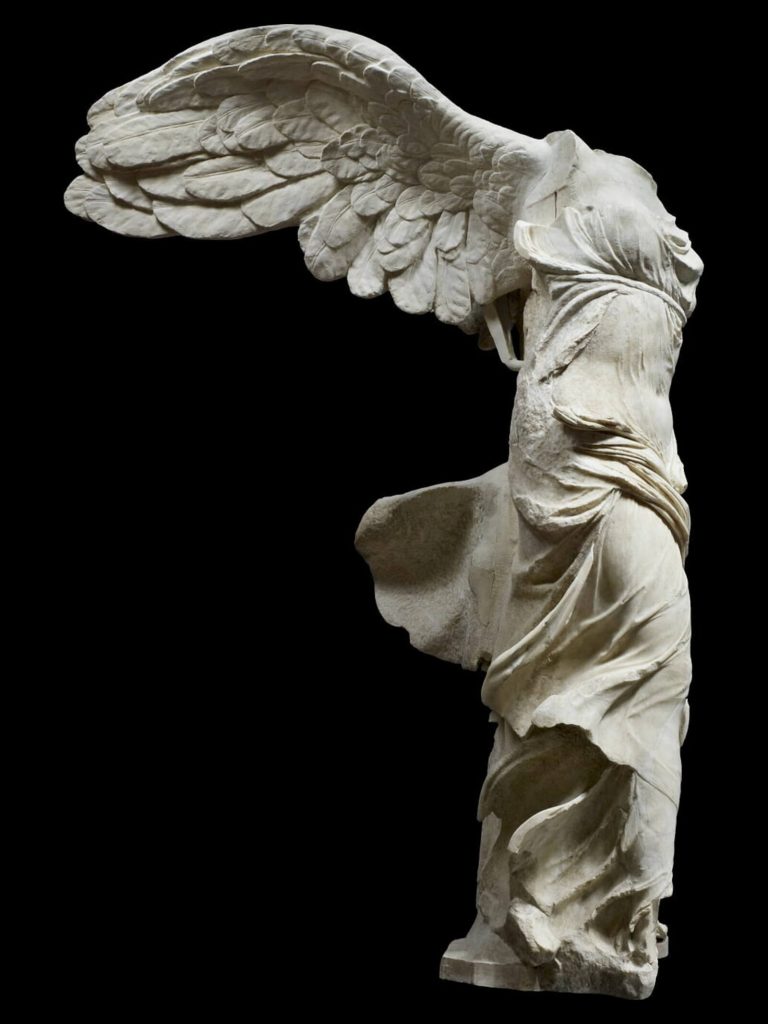
Nike of Samothrace, ca. 200-175 BCE, Parian and Lartian marble, Paleopoli, Samothrace, Greece, Louvre, Paris, France.
Nike of Samothrace is a masterpiece of Hellenistic art. It interacts with its environment, and it almost projects a living, breathing, and emotional experience. It conveys a divine presence through the interpretation of a winged human body. Polykleitos, one of the most famous Classical Greek sculptors of the 5th century BCE, would have hated Nike of Samothrace because it rejects all the canons of Classical Greek art. It is not ideally proportioned, it is not self-contained, and it does not have a bare simple pedestal. However, thankfully Polykleitos is not our modern standard for art appreciation. Humanity has evolved since 5th-century Athens, some for the better and some for the worse. Nike of Samothrace is an example for the better.
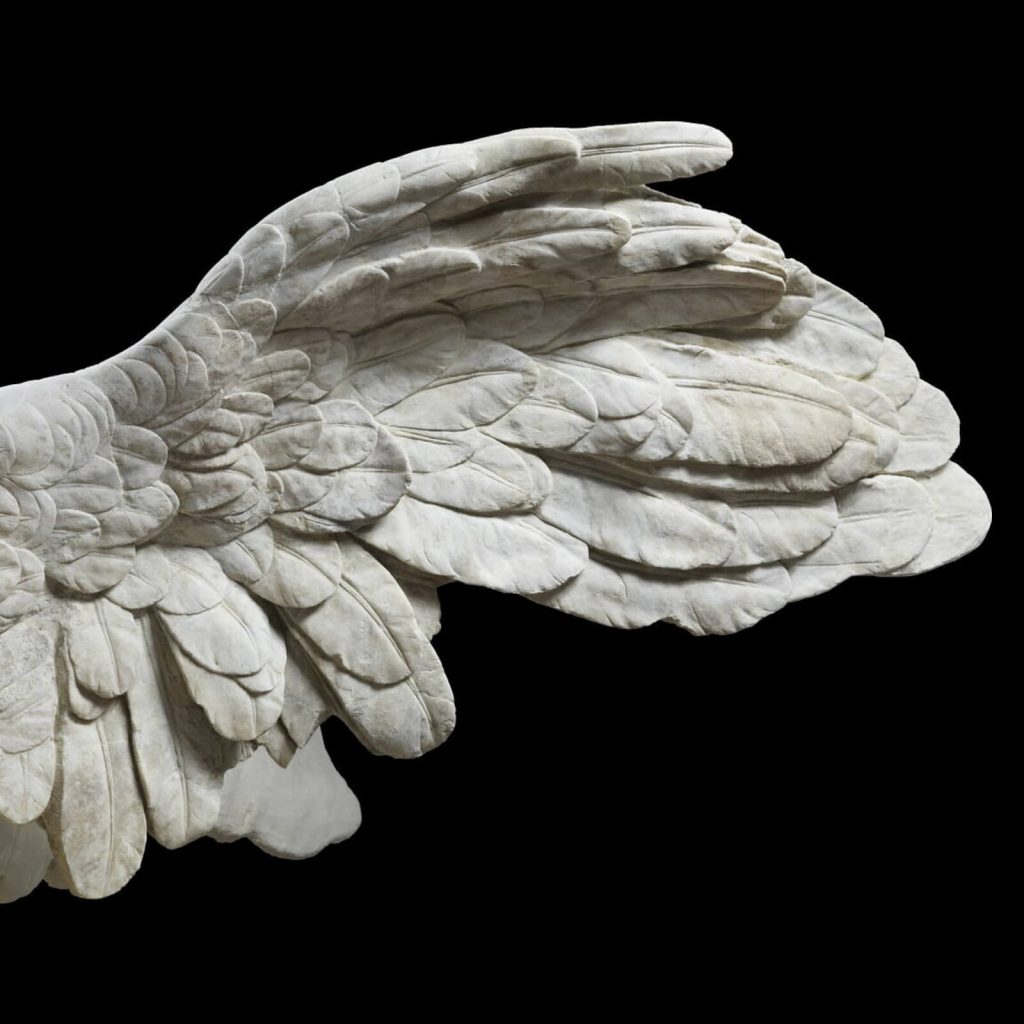
Nike of Samothrace, ca. 200-175 BCE, Parian and Lartian marble, Paleopoli, Samothrace, Greece, Louvre, Paris, France. Detail.
Most people who view Nike for the first time at the top of the grand staircase of the Denon Wing at the Musée du Louvre are struck by a sense of awe and wonder. Like a time traveler, Nike flies from the distant past to meet the contemporary viewer. If she still had her right arm and laurel wreath, who would she crown today? Who would be today’s victor, the champion of victory? We are open to suggestions.
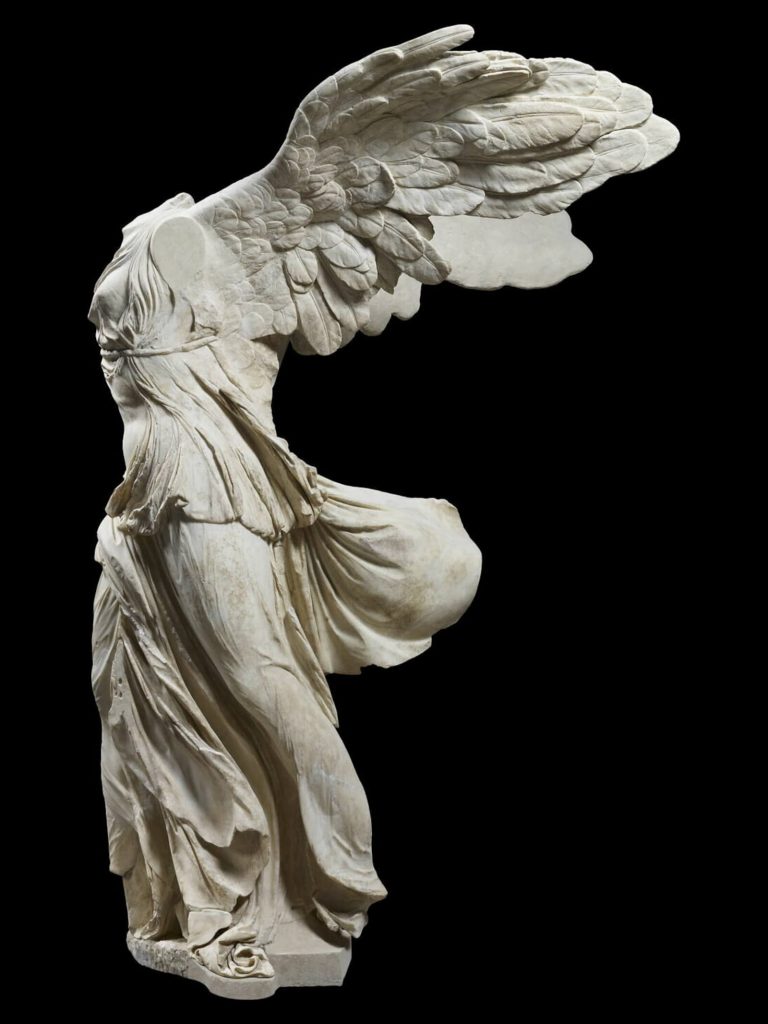
Nike of Samothrace, ca. 200-175 BCE, Parian and Lartian marble, Paleopoli, Samothrace, Greece, Louvre, Paris, France.
10,000 Years of Art. London, UK: Phaidon Press Limited, 2009.
Gardner, Helen, Fred S. Kleiner, and Christin J. Mamiya. Gardner’s Art Through the Ages. 12th ed. Belmont, CA, USA: Thomson Wadsworth, 2005.
“Victory of Samothrace.” Collection. Musée du Louvre, Paris, France. Retrieved 18 June 2023.
DailyArt Magazine needs your support. Every contribution, however big or small, is very valuable for our future. Thanks to it, we will be able to sustain and grow the Magazine. Thank you for your help!